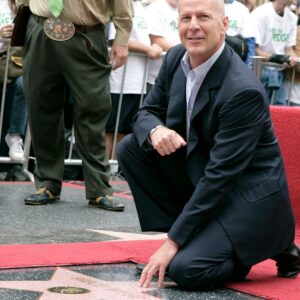Tina Turner, often hailed as the “Queen of Rock ‘n’ Roll,” was an extraordinary artist whose influence extended beyond her music. While her electrifying performances and distinctive, powerful voice are legendary, her visual artistry—particularly through album covers—deserves equal recognition. Tina Turner’s album art is not just promotional material; it is a crucial component of her storytelling. Each cover encapsulates the essence of the music within, serving as a visual representation of the themes, emotions, and journeys expressed in her songs. By examining the rich visual narratives embedded in Tina Turner’s album art, we gain a deeper understanding of her artistic genius and the broader messages she sought to convey.
A Visual Extension of Her Music
Tina Turner’s music has always been imbued with themes of empowerment, resilience, love, and personal growth. Her album covers are a natural extension of these themes, serving as the visual gateway into the emotional and narrative landscapes of her music. Each cover is a meticulously crafted piece of art that complements the lyrical content of the album, allowing listeners to connect with the music on a deeper level even before they press play.
One of the most iconic examples of this is the cover of Private Dancer (1984). This album marked a pivotal moment in Tina Turner’s career—her emergence as a solo artist after breaking free from the tumultuous and abusive relationship with Ike Turner. The cover features a minimalist design with Tina standing alone against a dark backdrop, her gaze direct and unwavering. This image speaks volumes about the themes of independence and rebirth that permeate the album. Her posture exudes a mix of vulnerability and strength, reflecting the personal and emotional journey she had undergone. The starkness of the cover art contrasts with the complexity of the emotions within the music, setting the tone for an album that would become a defining moment in her career. Through this visual storytelling, Tina invites listeners into her world—a world where she is reclaiming her power and artistry.
The Power of Body Language and Symbolism
Tina Turner’s use of body language on her album covers is a powerful storytelling tool that adds depth to the music. Her posture, facial expressions, and wardrobe choices are deliberate and convey specific messages that align with the themes of her albums. On the cover of Break Every Rule (1986), for example, Tina stands in a confident, defiant pose, symbolizing the album’s themes of breaking boundaries and challenging societal expectations. Her body language reflects her dynamic performances and unstoppable spirit, visually embodying the energy and resilience that define her music.
Symbolism is another key element in Tina Turner’s visual storytelling. Take the cover of Foreign Affair (1989), where Tina is depicted standing against a vast, open sky, wearing a wide-brimmed hat and set against a rugged landscape. This imagery evokes themes of freedom, exploration, and self-discovery—central themes in the album’s music. The wide-open spaces in the cover art mirror the expansive sound of the album, which blends elements of rock, pop, and blues, showcasing Tina’s versatility as an artist. The cover becomes a metaphor for the emotional and geographical journeys explored in the album’s lyrics, and it invites listeners to embark on this journey with her. By combining powerful symbolism with evocative imagery, Tina Turner elevates her album covers beyond mere promotional tools—they become integral parts of the storytelling experience.
Evolution and Reinvention
One of the most remarkable aspects of Tina Turner’s visual storytelling is how it evolves in tandem with her music. As she experimented with different genres and themes, her album covers shifted to reflect these changes, visually tracking her artistic growth. From the raw, gritty imagery of her early solo work to the polished, glamorous aesthetics of her later albums, Tina’s album covers document her ongoing journey of reinvention.
For instance, the cover of Wildest Dreams (1996) represents a significant evolution in Tina Turner’s visual storytelling. In this image, Tina is portrayed as a glamorous, almost mythical figure, standing in front of a larger-than-life backdrop and wearing a sparkling dress. This cover aligns with the album’s themes of ambition, desire, and aspiration, capturing Tina’s larger-than-life persona and her continued quest for success. The glamorous aesthetic reflects the polished sound of the album, which blends pop, rock, and R&B influences. This cover art reinforces the idea that Tina Turner is not just a survivor but a thriving force in the music industry, constantly reinventing herself and pushing the boundaries of her artistry.
Her ability to reinvent her image while staying true to the core themes of her music is a testament to her artistic vision. Each album cover tells the story of where Tina Turner was in her life and career at that moment, offering listeners a visual snapshot of her journey. Through this evolution, Tina’s album covers become a visual representation of her resilience, adaptability, and relentless pursuit of artistic excellence.
The Legacy of Tina Turner’s Visual Storytelling
Tina Turner’s album covers are more than just images—they are visual narratives that complement and enhance the themes of her music. By using body language, symbolism, and evolving imagery, Tina’s album covers tell stories that resonate with listeners on an emotional level. They provide a visual gateway into the themes of empowerment, resilience, and personal growth that define her music.
The impact of Tina Turner’s visual storytelling extends far beyond her own career. Her innovative use of album covers has influenced generations of artists who recognize the power of visual storytelling as a medium for narrative expression. Tina’s ability to convey complex themes through simple, yet powerful, imagery is a testament to her understanding of the visual medium as an extension of her music. For Tina Turner, album covers are not just promotional tools—they are an integral part of the storytelling experience.
In a world where music is increasingly consumed digitally, Tina Turner’s album covers serve as a reminder of the enduring power of visual storytelling. Even in the age of streaming and digital downloads, album covers remain a crucial part of the music experience, offering listeners a deeper connection to the artist and the themes of their work. Tina Turner’s album covers stand as a testament to the fact that visual art can enhance the storytelling potential of music, creating a richer, more immersive experience for listeners.
The Role of Photography and Design in Tina Turner’s Album Art
Photography and design played an essential role in the creation of Tina Turner’s album covers. Collaborating with some of the most talented photographers and designers of her time, Tina ensured that her visual storytelling was executed with precision and artistic flair. The careful selection of photographers, designers, and creative directors contributed to the overall impact of her album covers, elevating them to iconic status.
For example, the cover of Private Dancer was shot by renowned photographer Peter Ashworth, whose minimalist approach allowed Tina’s powerful presence to take center stage. The simplicity of the design highlights Tina’s strength and vulnerability, making it one of the most memorable album covers of the 1980s. The collaboration between Tina and Ashworth resulted in an image that perfectly encapsulates the themes of independence and resilience that run throughout the album.
Similarly, the cover of Break Every Rule was designed by noted graphic designer Tony Lane, who worked with Tina to create a bold and dynamic visual statement. Lane’s use of contrasting colors and strong typography reflects the album’s themes of defiance and empowerment, making the cover a striking visual representation of the music within.
These collaborations with top-tier photographers and designers allowed Tina Turner to create album covers that were not only visually stunning but also deeply meaningful. The attention to detail in every aspect of the design process ensured that each cover was a true reflection of the themes and emotions explored in the music.
The Cultural Impact of Tina Turner’s Album Covers
Tina Turner’s album covers have left a lasting impact on popular culture, becoming iconic symbols of her music and her legacy. The imagery from her albums has been referenced and celebrated in various forms of media, from fashion and advertising to film and television. These visual representations of Tina’s music have become synonymous with her larger-than-life persona, and they continue to inspire artists and creatives across different fields.
One of the most significant cultural impacts of Tina Turner’s album covers is the way they have influenced the portrayal of women in music. Tina’s powerful, confident poses on her album covers challenge traditional gender norms and offer a new vision of female empowerment. By presenting herself as a strong, independent woman, Tina Turner redefined the image of women in the music industry, paving the way for future generations of female artists to embrace their power and autonomy.
Her album covers also reflect broader cultural shifts in the representation of Black women in media. Tina’s refusal to conform to stereotypes and her celebration of her identity as a Black woman are evident in the bold imagery of her album covers. These images serve as a powerful statement of self-love and acceptance, challenging the dominant narratives of beauty and success in popular culture.
Through her album covers, Tina Turner not only told her own story but also contributed to a larger cultural conversation about race, gender, and identity. Her visual storytelling has had a profound impact on the way women, particularly Black women, are represented in the music industry and beyond.
Conclusion: The Enduring Legacy of Tina Turner’s Visual Storytelling
Tina Turner’s album covers are more than just images—they are powerful visual narratives that complement and enhance the themes of her music. Through her use of body language, symbolism, and evolving imagery, Tina’s album covers tell stories that resonate with listeners on an emotional level. They provide a visual gateway into the themes of empowerment, resilience, and personal growth that define her music.
The impact of Tina Turner’s visual storytelling extends beyond her own career, influencing generations of artists who recognize the power of album covers as a medium for narrative expression. Her ability to convey complex themes through simple, yet powerful, imagery is a testament to her artistry and her understanding of the visual medium as an extension of her music. For Tina Turner, album covers are not just promotional tools—they are an integral part of the storytelling experience.
In a world where music is increasingly consumed digitally, Tina Turner’s album covers remind us of the enduring power of visual storytelling. They stand as a testament to the fact that album art can be more than just a pretty picture; it can be a profound expression of the music it represents, offering listeners a deeper connection to the artist and the themes of their work.





